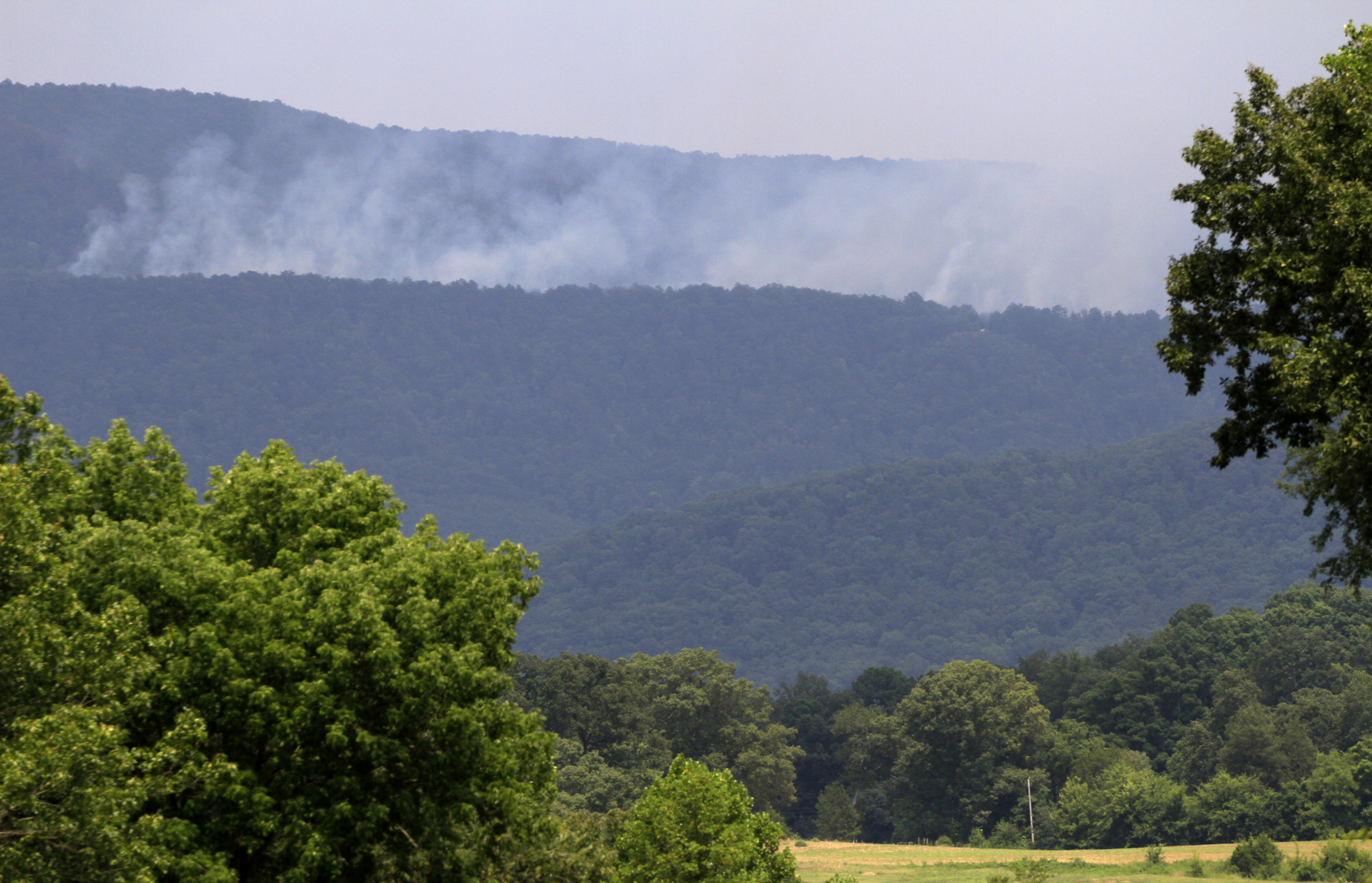Fire expected to consume 1,600 acres of Cherokee National Forest
Friday, January 1, 1904
Recreation impacts
• No structures are threatened.• The U.S. Forest Service has closed the Chilhowee Recreation Area and the Forest Service Road 77, along with all trails in the immediate area.• Hiking and mountain biking trails at the Ocoee Whitewater Center remain open.• Parksville Lake Campground is closed until power is restored.Source: U.S. Forest Service, Cherokee National Forest
Michael Williams, a 10-year veteran of the U.S. Forest Service out of Murphy, N.C., had a hot job Monday.
He was setting a fire to stop a fire along the historic Ocoee Scenic Byway in the Cherokee National Forest.
The idea was for Williams' fire line -- set with a drip torch -- to reach the road and stop, while down the hill on the other side of its ignition point, the set fire would continue to find fuel until it meets the wildfire rising from U.S. Highway 64 up the ridges of Chilhowee Mountain.
Firefighters hope to contain one of the largest wildfires burning right now in the Southeast before it becomes the largest one.
Eventually the Ocoee blaze -- dubbed the "Powerline Fire" -- will consume about 1,600 acres before rangers expect to be able to bring it under control, said Andy Gaston, acting district ranger of the Ocoee Ranger Station of the Cherokee National Forest.
"We haven't seen any real rain up here since Riverbend," Gaston said. "The woods are pretty piled up with dead wood from the Southern wood pine beetle invasion in 2006. That will burn with a lot of intensity," he said.
The blaze began Thursday night when high winds toppled power poles along U.S. 64 and sparks ignited the dry woods, Gaston said.
On Monday, calmer winds would still catch the rising flames of a decayed pine log and send sparks across Forest Road 77 at the ridge crest.
"Spots [where a blaze jumps a fire line -- even a road] happen. That's all there is to it," Gaston said. "So this water truck follows behind him watching to catch them."
A short distance behind Williams in one of five fire engine water trucks were two more Murphy, N.C., rangers -- part of the 100 firefighters from all over the Southeast who have poured in to help since the fire began with wind-blown and arcing power lines Thursday.
Lonnie Stalcup and Jed Green, also veteran U.S. Forest Service rangers, ate Williams' smoke and hopped into action when needed to douse any hungry embers that flew across the road to eat at crackling leaves and sticks.
"We've been doing this a long time," Stalcup said.
U.S. Forest Service firefighters also were using three helicopters to dip water from Parksville Lake to dump into the wildfire.
Later and in another section, they also plan to use the helicopters to drop fire "balls" to continue building their fire line protection.
"We don't expect to be fighting fires this size at this time of the year," Gaston said. "But the fuel load is so much, and it's so dry. We have to contain this."
On Monday afternoon firefighters could only say the fire was 15 percent contained.
But they had mapped their plan of attack using a combination of Forest Road 77 as one fire break and newly bulldozed trails curving back to U.S. 64 and two others.
Forest Road 77 normally makes up the second leg of the Ocoee Scenic Byway -- the first designated National Forest Scenic Byway in the United States.
The 19-mile byway follows most of the Old Copper Road through the Ocoee River Gorge, then continues along the shores of Ocoee Lake. Then Forest Road 77, adds a seven-mile drive up Chilhowee Mountain for a high view with beautiful scenic valley and bluff vistas.
"Some of the trees will die," Gaston said, with a shake of his head. "Especially where they are up against some of these piles [of fallen trees]."
Aided by the Tennessee Division of Forestry, Tennessee Wildlife Resources Agency and the Tennessee State Parks Department, the coalition of firefighters has battled daily 100-degree temperatures and very steep slopes.
Gray skies spit sprinkles of rain, but the rangers said the sporadic and short-lived showers were nowhere near enough to snuff the flames.
"We would need several inches of rain to put this out," Gaston said. "It's just too hot and too dry."
Gaston said the Ocoee fire is one of about seven burning in the 650,000-acre Cherokee National Forest, but it is the largest.
The Cherokee National Forest, stretching south and north of the Great Smoky Mountains National Park along Tennessee's eastern border, is the largest tract of public land in Tennessee. It also adjoins other national forests in Virginia, North Carolina and Georgia.
Contact staff writer Pam Sohn at psohn@timesfreepress.com or 423-757-6346.
